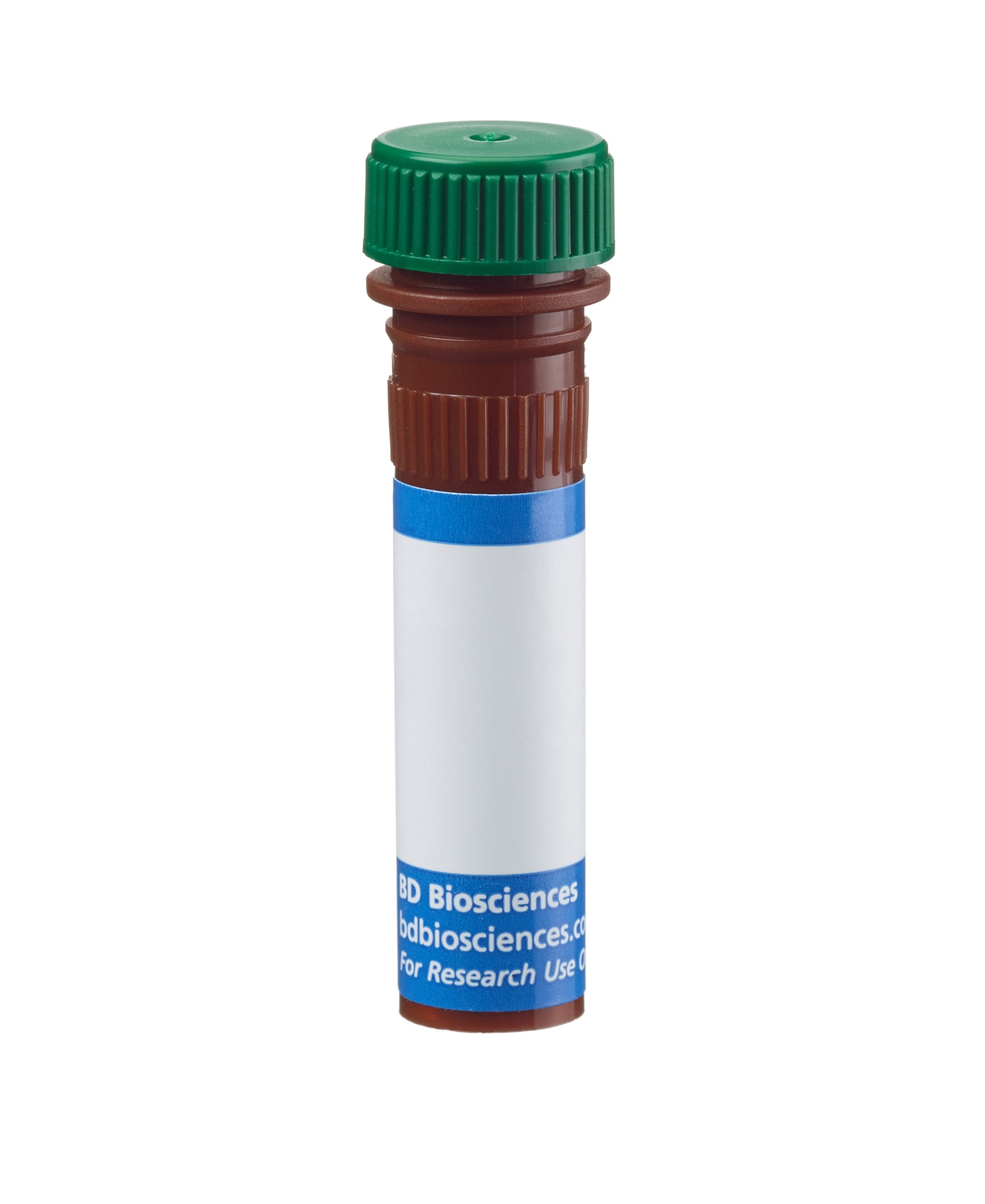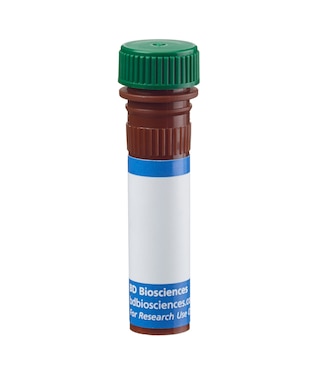Old Browser
Looks like you're visiting us from {countryName}.
Would you like to stay on the current country site or be switched to your country?




Flow cytometric analysis of CD117 expression on human TF-1 Cells. Cells from the human TF-1 (Human erythroleukemia, ATCC Cat. No. CRL-2003) cell line were stained with either BD Horizon™ BB515 Mouse IgG1, κ Isotype Control (Cat. No. 564416; dashed line histogram) or BD Horizon BB515 Mouse Anti-HumanCD117 antibody (Cat. No. 565172; solid line histogram). The fluorescence histogram showing CD117 expression (or Ig Isotype control staining) was derived from gated events with the forward and side light-scatter characteristics of viable TF-1 cells. Flow cytometric analysis was performed using a BD LSRFortessa™ Cell Analyzer System.


BD Horizon™ BB515 Mouse Anti-Human CD117

Regulatory Status Legend
Any use of products other than the permitted use without the express written authorization of Becton, Dickinson and Company is strictly prohibited.
Preparation And Storage
Recommended Assay Procedures
For optimal results, it is recommended to perform 2 washes after staining with antibodies. Cells may be prepared, stained with antibodies and washed twice with wash buffer per established protocols for immunofluorescent staining, prior to acquisition on a flow cytometer. Performing fewer than the recommended wash steps may lead to increased spread of the negative population.
Product Notices
- This reagent has been pre-diluted for use at the recommended Volume per Test. We typically use 1 × 10^6 cells in a 100-µl experimental sample (a test).
- An isotype control should be used at the same concentration as the antibody of interest.
- Caution: Sodium azide yields highly toxic hydrazoic acid under acidic conditions. Dilute azide compounds in running water before discarding to avoid accumulation of potentially explosive deposits in plumbing.
- The manufacture, use, sale, offer for sale, or import of this product is subject to one or more patents or pending applications. This product, and only in the amount purchased by buyer, may be used solely for buyer’s own internal research, in a manner consistent with the accompanying product literature. No other right to use, sell or otherwise transfer (a) this product, or (b) its components is hereby granted expressly, by implication or by estoppel. Diagnostic uses require a separate license.
- For fluorochrome spectra and suitable instrument settings, please refer to our Multicolor Flow Cytometry web page at www.bdbiosciences.com/colors.
- Please refer to www.bdbiosciences.com/us/s/resources for technical protocols.
Companion Products




The 104D2 monoclonal antibody specifically binds to human CD117, the receptor for stem cell factor (SCF). It selectively recognizes NIH- 3T3 cells transfected with human c-kit, the gene that codes for SCF-R. The 104D2 antibody does not block the epitope that binds SCF. In the bone marrow of humans and mice, SCF is expressed primarily on hematopoietic progenitor cells. Lack of functional SCF or deficient SCF-R caused by mutations in the Sl and W loci, respectively, can result in severe anemia and a decrease in the number of primitive progenitor cells in mice. Human hematopoietic progenitor cells can be recognized by their surface expression of CD34. This cell population constitutes a small subset (1% to 5%) of bone marrow cells. CD34+ cells contain a small subpopulation of primitive/non-committed progenitors, with the remaining fraction being cells committed to the various hematopoietic lineages. SCF alone induces extensive proliferation of erythroid-committed progenitor cells (CD34lo CD71hi CD64-). On primitive (CD34hi CD38lo CD50+) and granulo-monocytic (CD34+ CD64+) progenitor cells, SCF synergistically enhances the effects of other cytokines, the strongest of which are on the primitive progenitor cells. In addition, SCF promotes survival of primitive progenitors in the absence of proliferation. The receptor is highly expressed at similar levels on all of the three mentioned CD34+ cell subsets, whereas B-lymphoid committed progenitor cells (CD34+ CD19+) express low levels of SCF-R. Among CD34- bone marrow cells, only a small number of cells (mostly erythroid) express the receptor.
The antibody was conjugated to BD Horizon BB515 which was developed exclusively by BD Biosciences. With an excitation max of 490 nm and an emission max of 515 nm, BD Horizon BB515 can be excited by the 488 nm laser and detected in a standard FITC set (e.g. 530/30-nm filter). This dye provides a much brighter alternative to FITC with less spillover into the PE detector.

Development References (3)
-
Ashman LK, Buhring HJ, Aylett GW, Broudy VC, Muller C. Epitope mapping and functional studies with three monoclonal antibodies to the c-kit receptor tyrosine kinase, YB5.B8, 17F11, and SR-1. J Cell Physiol. 1994; 158(3):545-554. (Biology). View Reference
-
Ashman LK, Cambareri A, Nguyen L, Bühring H-J. CD117 workshop panel report. In: Kishimoto T. Tadamitsu Kishimoto .. et al., ed. Leucocyte typing VI : white cell differentiation antigens : proceedings of the sixth international workshop and conference held in Kobe, Japan, 10-14 November 1996. New York: Garland Pub.; 1997:816-818.
-
Rappold I, Ziegler BL, Kohler I, et al. Functional and phenotypic characterization of cord blood and bone marrow subsets expressing FLT3 (CD135) receptor tyrosine kinase. Blood. 1997; 90(1):111-125. (Immunogen: Flow cytometry). View Reference
Please refer to Support Documents for Quality Certificates
Global - Refer to manufacturer's instructions for use and related User Manuals and Technical data sheets before using this products as described
Comparisons, where applicable, are made against older BD Technology, manual methods or are general performance claims. Comparisons are not made against non-BD technologies, unless otherwise noted.
For Research Use Only. Not for use in diagnostic or therapeutic procedures.
Report a Site Issue
This form is intended to help us improve our website experience. For other support, please visit our Contact Us page.